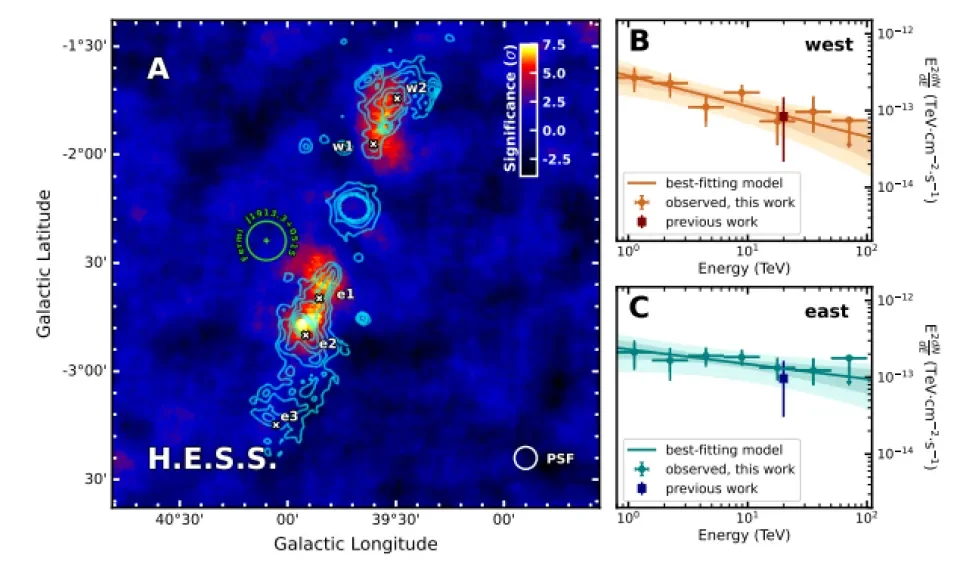
School of Physical Sciences Dr Robert Browse microquasar SS433
Dr. Robert Brose from DCU School of Physical Sciences, was part of a recent publication in Science, which detailed the acceleration and transport of relativistic electrons in the jets of microquasar SS433.
SS433 is a microquasar in our own Galaxy, roughly 18,000 lightyears away from Earth. A stellar-mass #blackhole is accreting material from a companion star and expelling fast material in “jets” in the process. These jets interact with the ambient medium and form regions that are able to accelerate particles to very high energies at large distances from the microquasar itself.
The gamma rays that are emitted by those particles were observed by the H.E.S.S.-telescopes in Namibia and the results were published in Science (https://www.science.org/doi/10.1126/science.adi2048). The superior angular resolution of the H.E.S.S. observations compared to earlier gamma-ray observations, enabled to study the motion and the dynamics of the jet. Results that are in particular interest towards quasars that are usually powered by accretion of matter on supermassive blackholes in the centres of far-away galaxies.
The HESS Collaboration developed the following animation, which provides a visual description of the environment which produces such energetic phenomena.

Acceleration and transport of relativistic electrons in the jets of the microquasar SS 433
